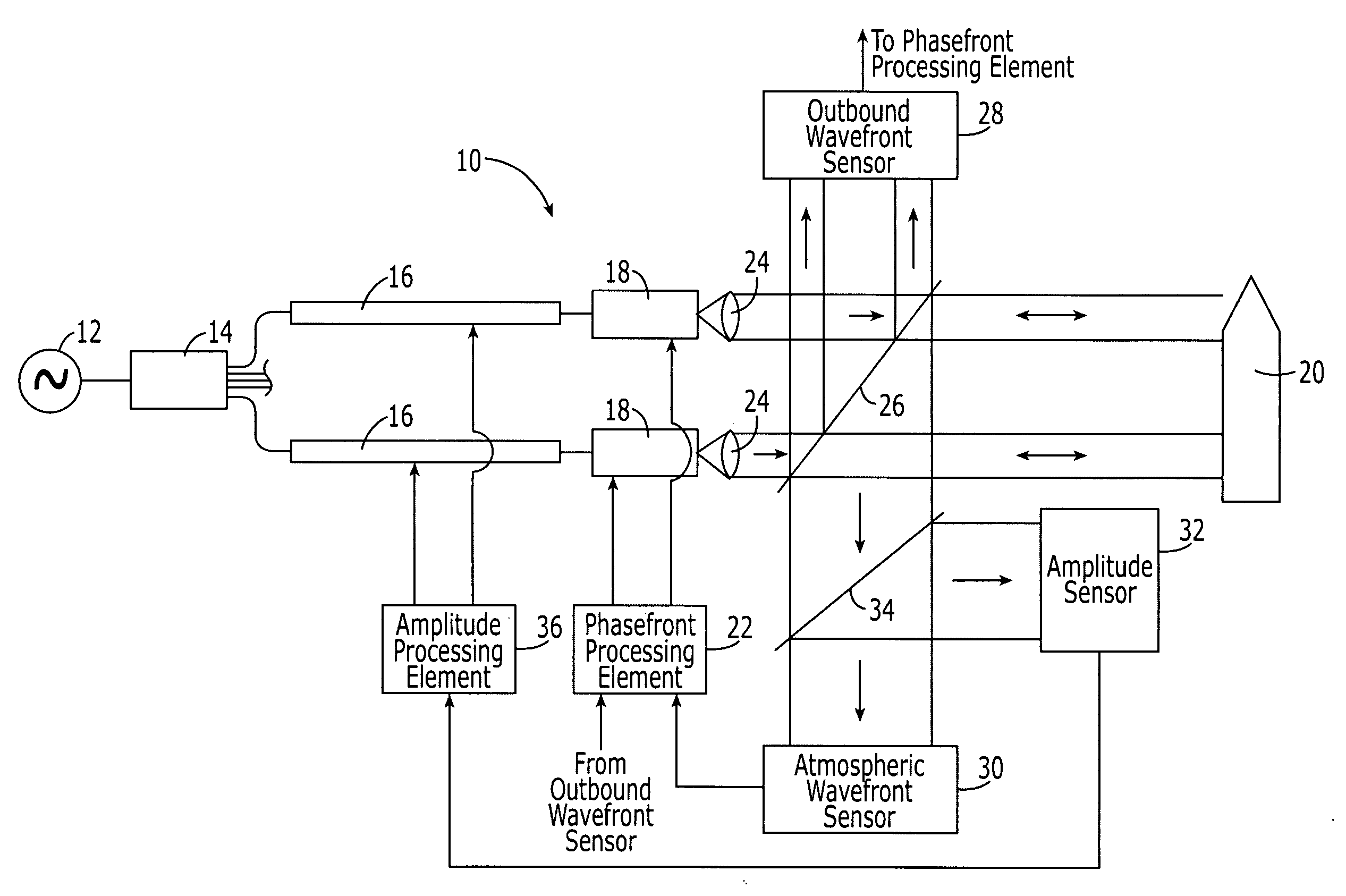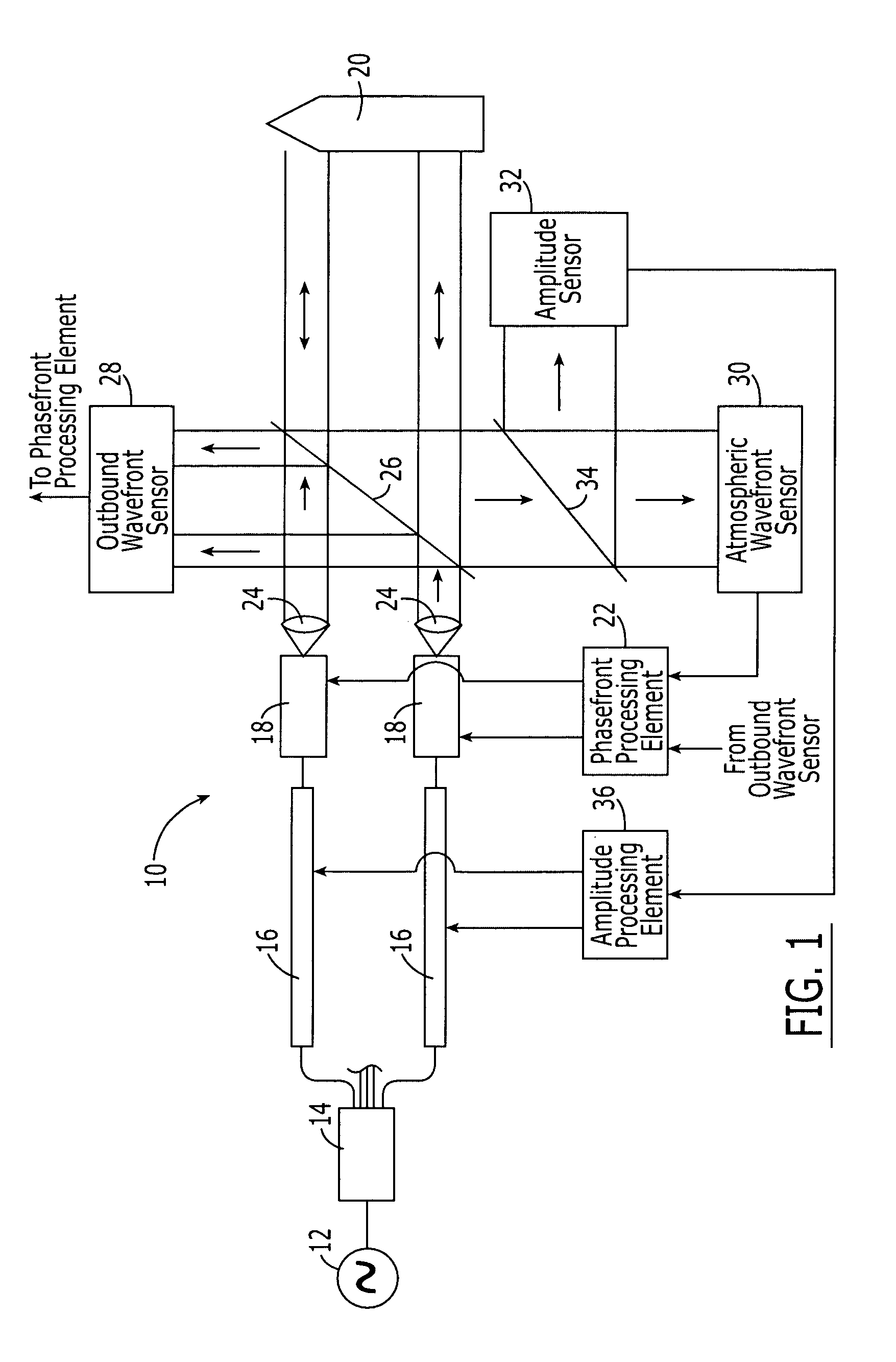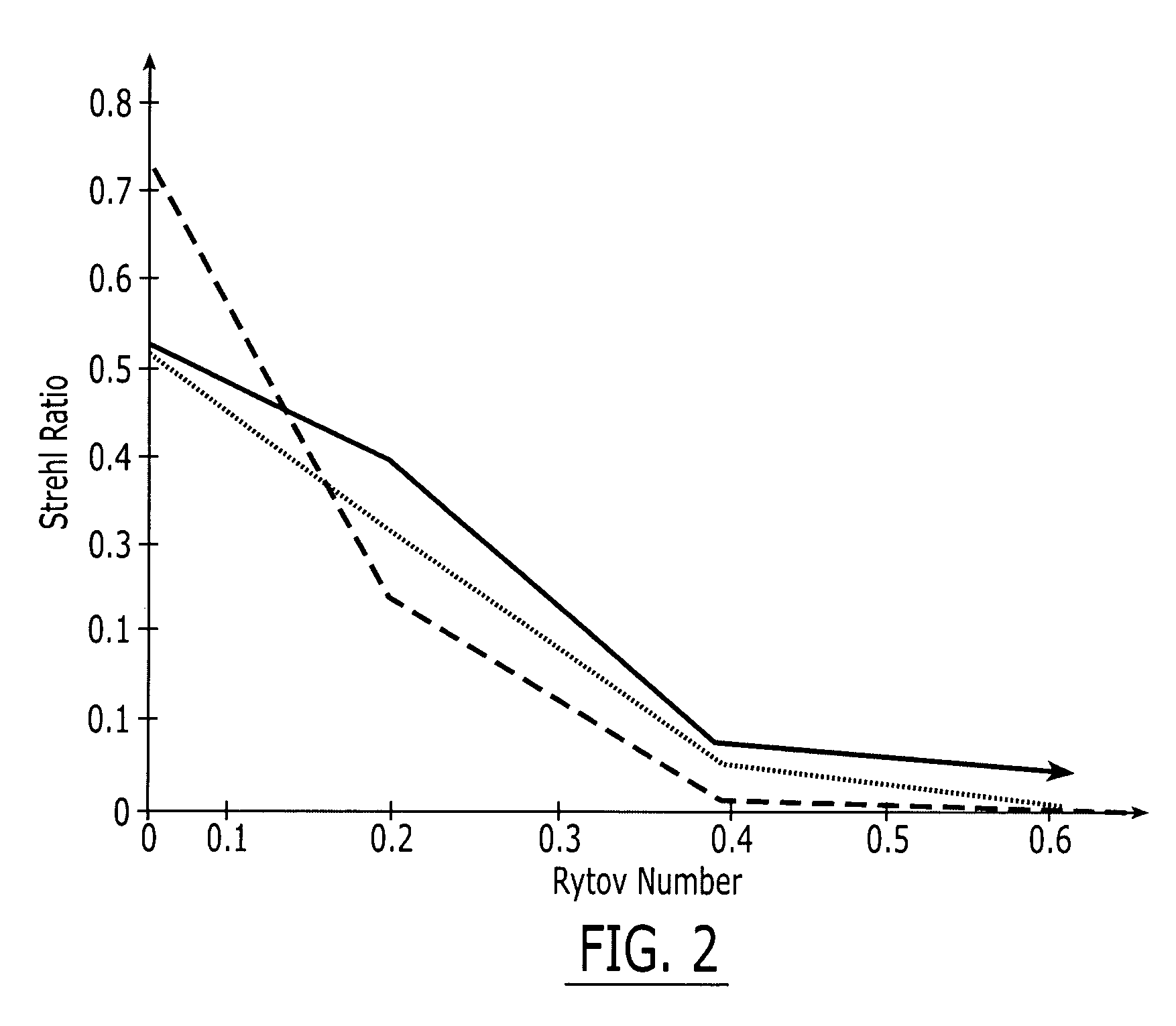Fiber optic phased array and associated method for accommodating atmospheric perturbations with phase and amplitude control
a fiber optic and phased array technology, applied in the field of laser systems, can solve the problems of unsatisfactory alteration of the phase and/or amplitude of the optical signal, wavefront zero intensity, optical signals incident upon the target may not have the desired amplitude, etc., to achieve the maximum efficiency of concentrating energy and increase power
- Summary
- Abstract
- Description
- Claims
- Application Information
AI Technical Summary
Benefits of technology
Problems solved by technology
Method used
Image
Examples
Embodiment Construction
[0024]The present invention now will be described more fully hereinafter with reference to the accompanying drawings, in which preferred embodiments of the invention are shown. This invention may, however, be embodied in many different forms and should not be construed as limited to the embodiments set forth herein; rather, these embodiments are provided so that this disclosure will be thorough and complete, and will fully convey the scope of the invention to those skilled in the art. Like numbers refer to like elements throughout.
[0025]Referring now to FIG. 1, a fiber optic phased array 10 according to one aspect of the present invention is depicted. The fiber optic phased array 10 is depicted in which an optical signal from a master oscillator 12 is split one or more times and then amplified. The amplified optical signals may then be combined, if desired, to produce an output optical signal having a greater power level than that originally provided by the master oscillator. Althou...
PUM
 Login to View More
Login to View More Abstract
Description
Claims
Application Information
 Login to View More
Login to View More - R&D
- Intellectual Property
- Life Sciences
- Materials
- Tech Scout
- Unparalleled Data Quality
- Higher Quality Content
- 60% Fewer Hallucinations
Browse by: Latest US Patents, China's latest patents, Technical Efficacy Thesaurus, Application Domain, Technology Topic, Popular Technical Reports.
© 2025 PatSnap. All rights reserved.Legal|Privacy policy|Modern Slavery Act Transparency Statement|Sitemap|About US| Contact US: help@patsnap.com



